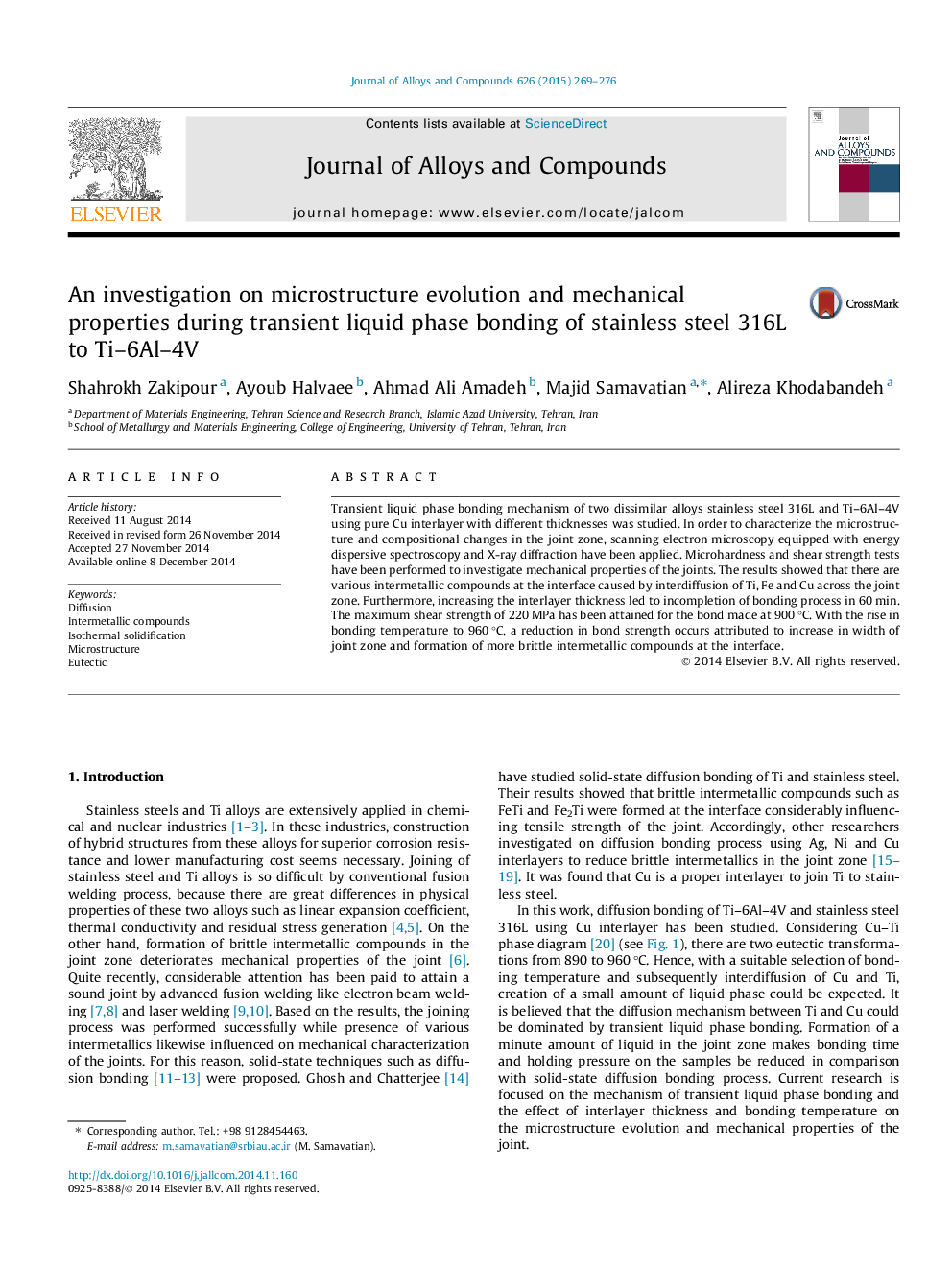| Article ID | Journal | Published Year | Pages | File Type |
|---|---|---|---|---|
| 1610265 | Journal of Alloys and Compounds | 2015 | 8 Pages |
•Transient liquid phase bonding of SS316L to Ti–6Al–4V was studied.•A vacuum furnace was used to prevent oxidation during the bonding process.•Diffusion of Fe, Cu and Ti at the interface led to formation of eutectic phases.•The maximum shear strength reached to 220 MPa for the bond with 50 μm thick interlayer at 900 °C.
Transient liquid phase bonding mechanism of two dissimilar alloys stainless steel 316L and Ti–6Al–4V using pure Cu interlayer with different thicknesses was studied. In order to characterize the microstructure and compositional changes in the joint zone, scanning electron microscopy equipped with energy dispersive spectroscopy and X-ray diffraction have been applied. Microhardness and shear strength tests have been performed to investigate mechanical properties of the joints. The results showed that there are various intermetallic compounds at the interface caused by interdiffusion of Ti, Fe and Cu across the joint zone. Furthermore, increasing the interlayer thickness led to incompletion of bonding process in 60 min. The maximum shear strength of 220 MPa has been attained for the bond made at 900 °C. With the rise in bonding temperature to 960 °C, a reduction in bond strength occurs attributed to increase in width of joint zone and formation of more brittle intermetallic compounds at the interface.
